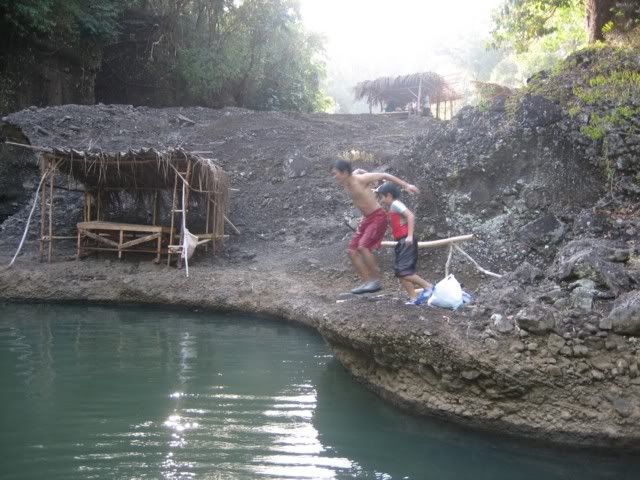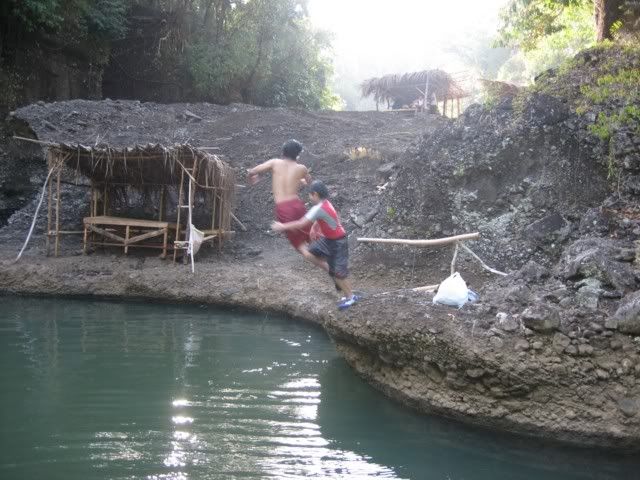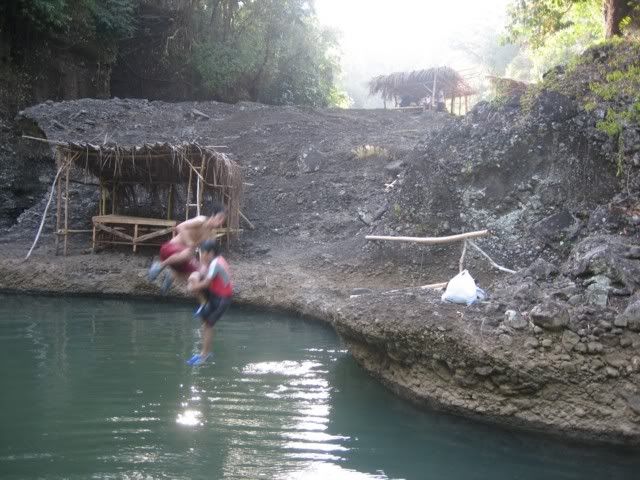Monday, April 09, 2007
Ocnarf's Guide to Taking the Plunge
Introduction:I would like to tell you first off that though taking the plunge may seem hard, it actually is a lot easier as it looks, if one is guided in the proper manner, which is hopefully the reason why you are reading this self-explanatorily entitled "Ocnarf's Guide to Taking the Plunge" instead of a possible myriad of other reasons I'd rather not discuss. Not now, at least. Maybe next time.
Oh, and before I forget, here's the warning, put in all-caps so that you know it's a warning...
WARNING:
DO NOT TRY THIS AT HOME, UNLESS YOUR HOME IS IN AT LEAST FIVE FEET OF WATER. DOING SO MAY HARM NOT ONLY YOUR CHILDREN, BUT ALSO YOU. THE AUTHOR OF THIS WORK MAY NOT BE DEEMED RESPONSIBLE FOR INJURIES CAUSED BY IRRESPONSIBILITY, LACK OF SAFETY PRECAUTIONS, OR PLAIN STUPIDITY.
DO NOT TRY THIS AT HOME, UNLESS YOUR HOME IS IN AT LEAST FIVE FEET OF WATER. DOING SO MAY HARM NOT ONLY YOUR CHILDREN, BUT ALSO YOU. THE AUTHOR OF THIS WORK MAY NOT BE DEEMED RESPONSIBLE FOR INJURIES CAUSED BY IRRESPONSIBILITY, LACK OF SAFETY PRECAUTIONS, OR PLAIN STUPIDITY.
Step 1: the Wind-Up

The Law of Energy Conservation states that energy is neither created nor destroyed, only that it changes its state. Apparently, whoever named this law must have been very, very observant. This step is, therefore, dedicated to that very intelligent fellow, for this step remembers his law by primarily concerning itself with focusing most of one's energy into the potential state, which means there should be minimal movement in this step. This is so that there is sufficient kinetic energy for the amount of motion involved in the next step of the process, which is...
Step 2: the Jump

This is the step where we are able to prove Isaac Newton's First Law of Motion that states every object in a state of uniform motion tends to remain in that state of motion unless an external force is applied to it, which is essentially a restatement of Galileo Galilei's concept of inertia, which in turn is a modified restatement of Aristotle's concept of kinesis.
In short, people simply love copying each other's work. And don't you tell me the thought of copying someone else's work never, ever crossed your mind. Ever.
All this, though, has no relation to our third step, for this discourse has apparently branched into an inexplicably annoying piece of insanity. Nevertheless, for formality's sake, I present you with the third step...
Step 3: the Plunge

Now that we're back on topic, this is the step where we reap the benefits of inhibiting our movement in the first step, for this step is essentially a follow through to the energy in the second step, following the laws of gravity, kinetics, and a load of other things you probably wouldn't bother with unless your course or job depended on being so esoteric, the pinnacle of which may be seen by spectators as a big, messy splash (not in picture).
Congratulations, you have just learned how to take a plunge.
Subjects: Me (red shorts, doing a 360-degree spin), Cousin Miguel (red and gray suit, gray and black shorts, doing an good old cannonball)
Venue: Cavinti, Laguna
Date: April 5, 2007

3 Comments:
ang kulet ng sinulat mo!:D
Kapag walang magawa ang tao, pilit na nagiging makulit ang pag-iisip niya dahil sinusubukan niyang balansehin ang kakulangan ng aktibidad sa kanyang pisikal na kalagayan.
Malabo ba? ö
malinaw. sabagay, mas makulit ako pag walang magawa.
Post a Comment
<< Home